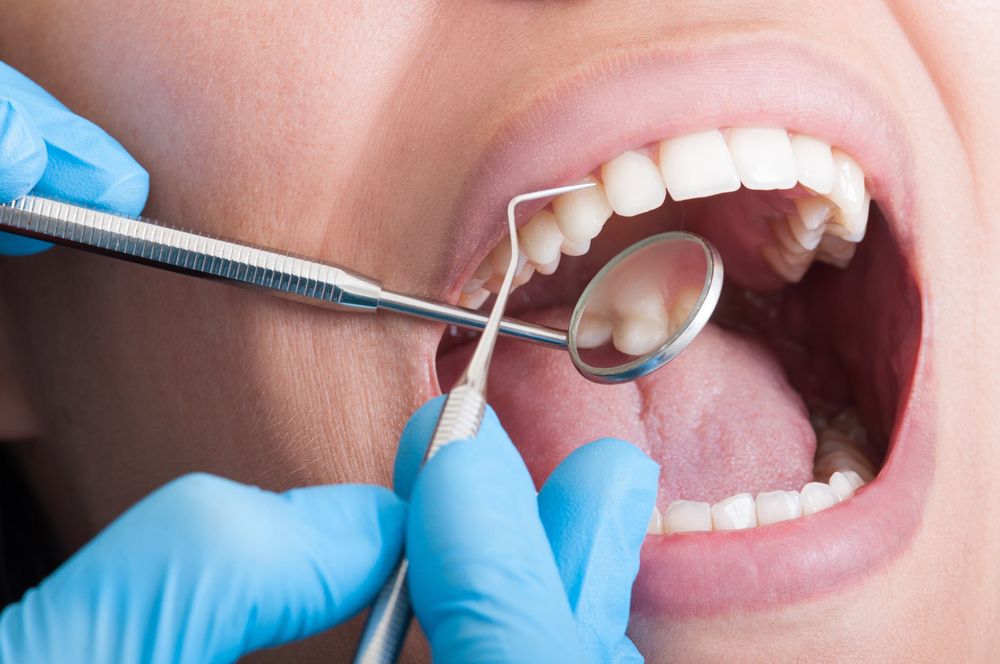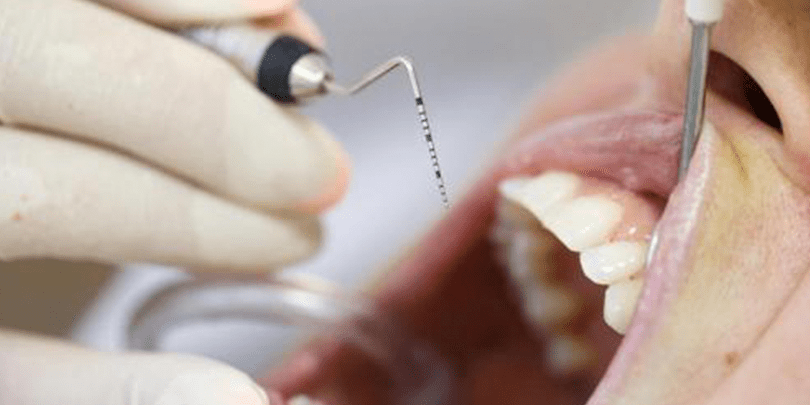Patient-centered Preventive Dentistry in Seattle, WA
We believe there is nothing better than taking good care of your teeth and keeping them healthy and beautiful for a lifetime. At 32 Good Reasons, we provide our patients with a regular schedule of cleanings and check-ups tailored to their specific needs. We also work with them on instruction for the most effective homecare.

Preventive dentistry describes the procedures used to detect and treat tooth decay and other diseases in the earliest stages. Our goal is to keep you as healthy as possible, maintain your natural teeth for life, and give you a BRIGHT and HAPPY smile.
What is Preventive Dentistry?
Preventing dental disease starts at home with good oral hygiene and a balanced diet. Another component starts in the dental office, with the efforts of your dentist and dental hygienist to promote, restore, and maintain your oral health. A preventive program is a cooperative effort by you, the dentist, and our hygiene staff to prevent the onset, progress, and recurrence of dental diseases and conditions.
Preventive Dental Procedures
Preventive dentistry procedures include the most basic services and advanced technological innovations. These procedures can include:
Dental Exams
A comprehensive dental exam will be performed by the dentist at your initial dental visit. Part of your ongoing care includes regular check-up exams where your dentist and hygienist will perform the following:
- Examination of X-rays: Essential for detection of decay, tumors, cysts, and bone loss. X-rays also help determine tooth and root positions.
- Oral Cancer Screening: Check the face, neck, lips, tongue, throat, tissues, and gums for any signs of oral cancer.
- Gum Disease Evaluation: Check the gums and bone around the teeth for any signs of periodontal disease.
- Examination of Tooth Decay: All tooth surfaces will be checked for decay with special dental instruments.
- Examination of Existing Restorations: Check current fillings, crowns, etc.
Professional Dental Cleaning: (Dental Prophylaxis)
Simply known as teeth cleaning, these are usually performed by Registered Dental Hygienists. Your cleaning appointment will include a dental exam and the following:
- Removal of calculus (tartar): Calculus is hardened plaque that has been left on the tooth for some time and is now firmly attached to the tooth surface. Calculus forms above and below the gum line and can only be removed with special dental instruments.
- Removal of plaque: Plaque is a sticky, almost invisible film that forms on the teeth. It is a growing colony of living bacteria, food debris, and saliva. The bacteria produce toxins that inflame the gums. This inflammation is the start of periodontal disease.
- Teeth polishing: Remove stain and plaque that is not otherwise removed during tooth brushing and scaling.
Depending on the severity of tartar building and plaque, you may need what is known as a “deep teeth cleaning” or scaling and root planing. Deep cleanings are used when there is a large amount of tartar and bacteria under the gums.
Additional Preventive Procedures
Other treatments that fall under preventive dentistry include:
- Flouride: Fluoride strengthens teeth and prevents tooth decay. Fluoride treatments are provided in dental offices, and dentists recommend using fluoride toothpastes, and mouth rinses at home. Flouride is even added to public drinking water. Fluoride can even reverse tiny cavities that are starting to form.
- Mouthguards: Mouthguards are custom made and prescribed by your dentist to provide a better fit. They are typically worn during sports activities to help protect against broken teeth. Mouth guards also are used to treat teeth grinding (bruxism), which can wear down teeth and contribute to temporomandibular joint (TMJ) disorder.
- Sealants: Sealants are invisible plastic coatings that fill the tiny grooves in the teeth in the back of your mouth so bacteria doesn’t have a place to settle. They help prevent cavities from forming and the need for fillings later on.
Taking preventative steps with your oral hygiene and keeping up to date with your dental visits help avoid serious and costly dental problems, and is the key to having a healthy, confident, beautiful smile.

Fluoride strengthens teeth and prevents tooth decay. Fluoride treatments are provided in dental offices, and dentists recommend using fluoride toothpastes, and mouth rinses at home. Fluoride is even added to public drinking water. Fluoride can even reverse tiny cavities that are starting to form.

Periodontal disease is extremely common and progresses with age. At any given moment approximately half of the population has it, and once you have it doesn’t go away without treatment. It is estimated that during their lifetime 80% of the U.S. population will develop gum disease. According to insurance statistics less than 5% of those infected are actually getting treatment.
The initial stage of gum disease is called Gingivitis, while the more advanced stages with deep pocketing and bone loss are called Periodontitis. While no one has reported to have died because of gum disease directly, it increases the risk of heart disease, stroke, cancer, diabetes and a host of other life threatening diseases. This relationship between gum disease and more critical diseases is part of the “oral-systemic connection,” where bacteria from your mouth find avenues into your bloodstream and subsequently the rest of your body.
The good news is we can combat the onset of periodontal disease through diligent brushing and flossing, using toothpaste and mouthwash that specifically combat anaerobic bacteria and sulfur compounds, and improved nutrition and beneficial supplements. Regular visits to your dentist for preventative care and checkups will support your dental health and let you know if you are at additional risk.
Diagnosis of Periodontal Disease
Periodontal disease is diagnosed by the dentist and hygienist. At your first comprehensive appointment they will do an exam to look for: moderate to severe plaque and tartar build ups, red, swollen, or receding gums that bleed easily, loose teeth, bone loss, and persistent bad breath. We will also do the following procedures to help diagnose periodontal disease:
X-rays: Looking at x-rays shows if any bone loss is present.
Periodontal Probing: The hygienist will do a periodontal probing which is done by using a mirror and a small, thin probe, which measures, in millimeters, the depth of the unattached gum tissue (or gum pockets) around your teeth. A healthy pocket depth is 2-3mm. Pockets that measure 4mm are a sign of gum tissue inflammation and 5-6mm or greater, indicate bone loss. The deeper the gum tissue pockets in millimeters, the more severe your periodontal disease.
Prevention
Periodontal disease, also known as gum disease, is caused when bacteria in plaque (a sticky, colorless film that forms in the mouth) builds up between the gums and teeth. When the bacteria begin to grow, the gums surrounding the tooth can become inflamed.
The best way to prevent periodontal disease is to take care of your teeth, gums, and overall health.
Good oral hygiene starts with:
- Brushing your teeth twice daily with fluoride toothpaste; once in the morning and before bedtime.
- Flossing your teeth once daily, preferably before bedtime
- Using a mouthwash can help reduce plaque and can remove remaining food particles that brushing and flossing missed.
- Eating a balanced diet; limiting candy, sweets, sugary drinks and fruit juice.
- Abstaining from tobacco products.
- Getting regular checkups and cleanings at our office.
Signs and Symptoms of Periodontal Disease
Periodontal disease happens as your body tries to fight off “bad bacteria” living in the mouth and underneath the gums. Some signs and symptoms of this disease may include: bad breath, blood or pus coming out of the gums, and puffy or sore gums. Some people have no visible symptoms of this condition, as it is often painless.
While it is possible to have periodontal disease and not know it, some symptoms can include:
- Gums that bleed easily
- Red, swollen, tender gums
- Gums that have pulled away from the teeth
- Persistent bad breath or bad taste
- Pus between your teeth and gums
- Permanent teeth that are loose or separating
- Any change in the way your teeth fit together when you bite
- Any change in the fit of partial dentures
Causes of of Periodontal Disease
The main cause of periodontal disease is plaque. Plaque is a sticky bio film of food debris, mucus, and bacteria that always forms on teeth. When plaque combines with food and saliva it forms acids and toxins that cause tooth decay and gum disease. Plaque that is not removed by daily brushing and flossing, remains on your teeth and can harden after just 24-26 hours! Once plaque has hardened or mineralized, it forms the rough, crusty deposit called tartar or calculus. Calculus is too hard to remove with a toothbrush, and can only be professionally removed by a registered dental hygienist through the use of ultrasonic and special instruments.
The following factors can also affect the health of your gums:
- Stress
- Poor diet
- Diabetes
- Grinding or clenching your teeth
- Genetics
- Puberty, pregnancy and menopause in women
- Smoking/tobacco use
- Other systemic diseases
Mouth and Body Connection
The bacteria that are involved in gum disease and periodontal disease can also travel into our blood vessels, where they may crawl into the walls of blood vessels and cause inflammation. This can increase our risk of heart disease, stroke, and diabetes.
Having bleeding gums can also increase a pregnant mother’s risk of delivering her baby pre-term.
Periodontal Disease and Pregnancy
Pregnant women are particularly prone to periodontal (gum) disease due to hormonal changes associated with pregnancy. Research has found that women with periodontal disease may be at higher risk of delivering pre-term, low birth weight (PLBW) infants.
Women have special dental needs at different stages of life. Women are especially susceptible to periodontal disease at various times of their lives. Hormonal changes such as puberty, menstruation, pregnancy and menopause can cause an exaggerated response to irritants from bacterial plaque. During these times, your body experiences hormonal changes that can make your gums sensitive and increase your risks of gum disease. The condition worsens if patients are already prone to periodontal disease. You need to take extra care of yourself at times when your body is going through these hormonal changes. Diet, exercise and regular visits to your physician are important to maintain good health. Daily brushing and flossing and regular visits to your dentist are important, too.
Periodontal Disease, Heart Disease and Stroke
Several studies have shown that periodontal disease is associated with heart disease. While a cause-and-effect relationship has not yet been proven, research has indicated that periodontal disease increases the risk of heart disease.
Scientists believe that inflammation caused by periodontal disease may be responsible for the association.
Periodontal disease can also exacerbate existing heart conditions. Patients at risk for infective endocarditis may require antibiotics prior to dental procedures. Your periodontist and cardiologist will be able to determine if your heart condition requires use of antibiotics prior to dental procedures.
Stroke
Additional studies have pointed to a relationship between periodontal disease and stroke. In one study that looked at the causal relationship of oral infection as a risk factor for stroke, people diagnosed with acute cerebrovascular ischemia were found more likely to have an oral infection when compared to those in the control group.

Sealants are a protective coating applied to the biting surfaces of teeth after any staining is removed. The sealant protects the tooth from getting a cavity by shielding against bacteria and plaque. Sealants are most commonly place on a child’s permanent posterior teeth (molars) because they are more prone to cavities. They can also be placed on adults’ teeth, but most insurance companies won’t cover them.
